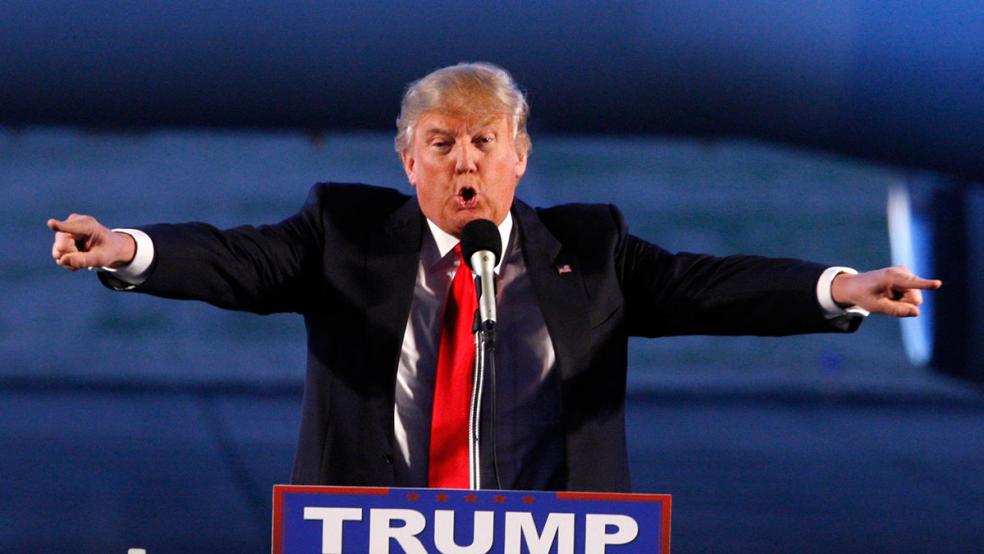Donald Trump does everything in bold strokes, and his tax proposal is no exception. Trump is calling for massive tax cuts that would reduce tax revenues by roughly $10 trillion over 10 years. Everyone would get a break, but the wealthiest would get the lion’s share. The economy would get a boost, but the federal debt would soar, with record deficits for years to come.
The Fiscal Times asked a panel of experts in tax and fiscal policy to review the Trump tax plan: William G. Gale, the Arjay and Francis Miller Chair in Federal Economic Policy at the Brookings Institution and co-director of the Tax Policy Center; Douglas Holtz-Eakin, a former Congressional Budget Office Director; and G. William Hoagland, a vice president of the Bipartisan Policy Center and a former Republican Senate budget official. A summary of their analysis is below:
| Gale | Hoagland | Holtz-Eakin | Category average | |
| Legislative feasibility | D | C | F | D |
| Economic growth | D | C | C | C- |
| Fiscal responsibility | D | D | F | D- |
| Impact on taxpayers | F | C | C | D+ |
| Expert average | D- | C- | D- |
We've broken down each expert's analysis in the three report cards below:
 |
Donald Trump's Tax Proposal Analyst: William C. Gale Co-Director, Urban-Brookings Tax Policy Center |
|
| Legislative feasibility | D | This is pie-in-the-sky nonsense, losing an enormous amount of revenue by cutting taxes dramatically for the very rich. The plan would dramatically increase deficits. Even a Republican-controlled legislature wouldn’t have the guts to pass this. |
| Economic growth | D | Haven't we been down this road before? Deficit-financed tax cuts are not good at generating economic growth. The skyrocketing effect on debt will hurt growth. |
| Fiscal responsibility | D | Again, these are "huuuuuge" tax cuts. Even if one assumes some positive growth effect, the net revenue losses are enormous. |
| Impact on taxpayers | F | The tax cuts have to be paid for. Growth will not finance the cuts. That means that some combination of spending cuts or future deficits will finance the tax cuts. The spending cuts will be borne mainly by middle and low-income households. The deficits will be borne by future generations. |
 |
Donald Trump's Tax Proposal Analyst: William Hoagland Senior Vice President, Bipartisan Policy Center |
|
| Legislative feasibility | C | Given significant loss of revenue over next decade, poor chance as proposed that this would ever become law. 15% corporate tax rate outside the range of bipartisan support. |
| Economic growth | C | Positive aspects relative to lower corporate tax rate, though likely would be negotiated higher than 15%, closer to 25%. Positive aspects, however, are offset by significant increases in debt and deficits with increasing interest costs in the future. |
| Fiscal responsibility | D | Significant increases in debt and deficits not offset by any major reductions in federal mandatory spending programs. Very poor fiscal long-term plan. |
| Impact on taxpayers | C | No tax bracket would see a negative impact, though disproportionately overweighed toward top bracket, top 1% of taxpayers. |
| Additional comments | Concern that such a tax plan if enacted would further increase tension over income distribution issues while not addressing lower income issues. Could result in growing social and economic unrest, increasing dangerous economic polarization. | |
 |
Donald Trump's Tax Proposal Analyst: Douglas Holtz-Eakin President, American Action Forum |
|
| Legislative feasibility | F | The plan loses too much revenue to even be considered and lacks the cohesion of a genuine tax reform. |
| Economic growth | C | The corporate reform would have dramatic impacts and the lower marginal rates are beneficial. It would be an A if it was paired with a realistic spending side of the budget and reforms that broadened the base. |
| Fiscal responsibility | F | It cannot be paired with a commitment to not reform either Social Security or Medicare. |
| Impact on taxpayers | C | It reduces taxes for everyone, but at the expense of future taxpayers. |
More on the Clinton and Trump tax plans:





